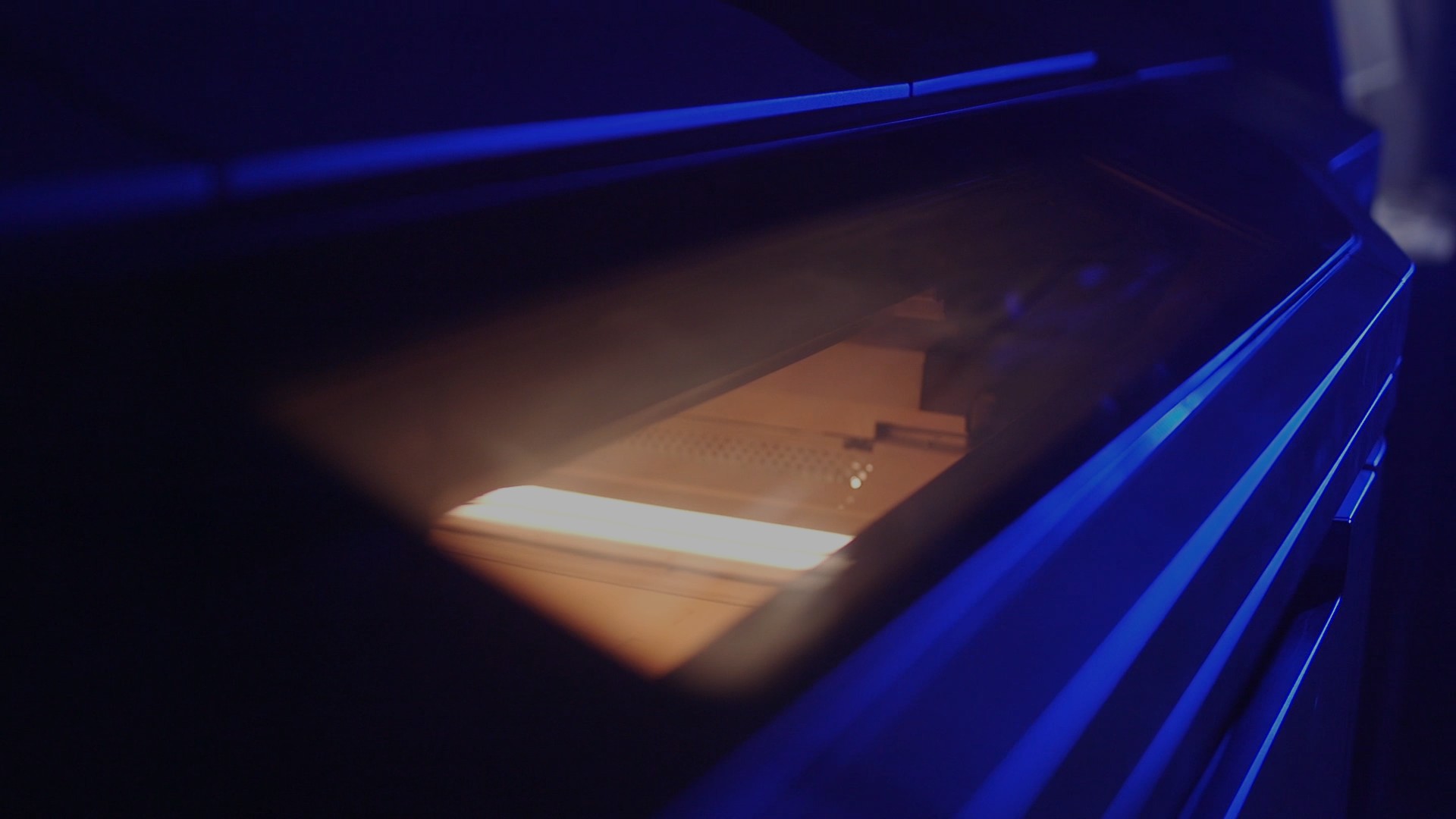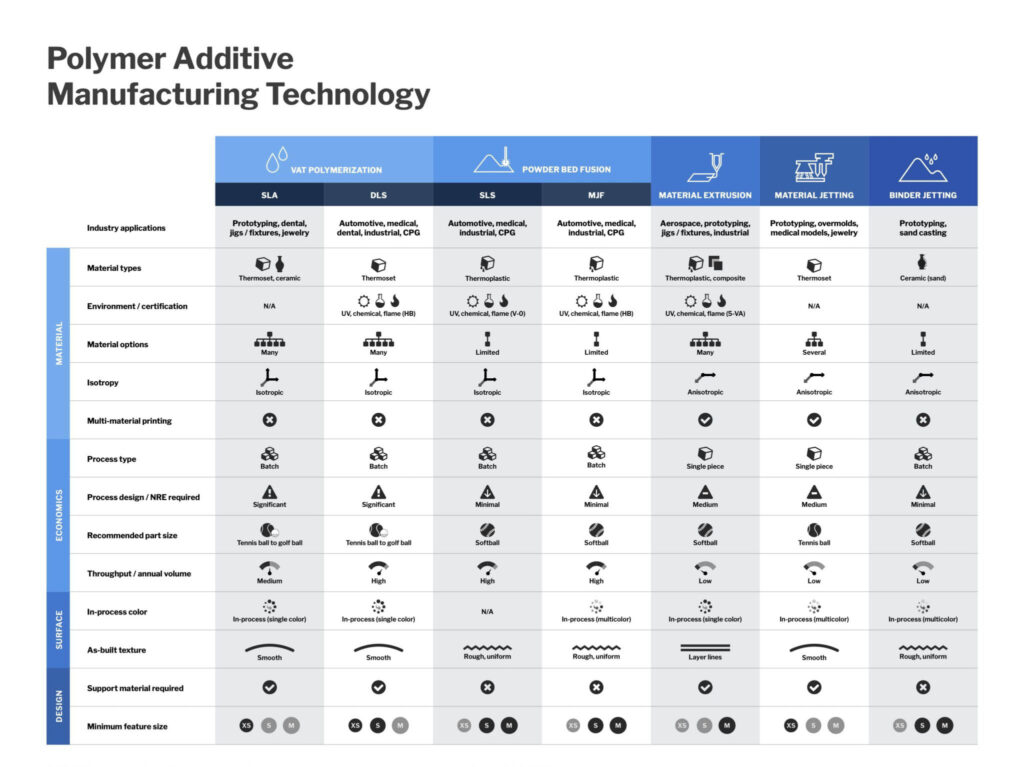

Originally published on fastradius.com on July 7, 2022
Each additive manufacturing technology has its own unique capabilities and its own set of strengths. To help you better understand each of these technologies and what sort of products and parts they’re best suited for, we’ve drawn upon the knowledge of our engineers to create these comprehensive, easy-to-read charts.
As you look at these charts, you’ll find information about the capabilities of vat polymerization technologies, including stereolithography (SLA) and Carbon® Digital Light Synthesis™; powder bed fusion technologies, including selective laser sintering (SLS) and HP Multi Jet Fusion (MJF); material extrusion; material jetting; and binder jetting.


Looking for more details about specific additive technologies? Keep scrolling.
As always, if you have any questions or are unsure about which additive technology is best for your product and budget, contact us. We’ll guide you in the right direction. You can also compare manufacturability, costs, and lead times for additive technologies by logging in to your SyBridge Technologies account.
Forget typical cycle times. We're pushing the boundaries of conformal cooling. While traditional approaches deliver…
Forget typical cycle times. We're pushing the boundaries of conformal cooling. While traditional approaches deliver…
From left to right: Brayden Janak (apprentice); Logan Vifaquain (CNC machining, Programming and CMM); Ron…
SyBridge Technologies is proud to announce we have been awarded the 2023 General Motors Supplier…
Today, designers and engineers are accustomed to working with digital tools in their day-to-day jobs.…
Optimizing Your Injection Molding Process for Cost-Effective Manufacturing Excellence In today’s competitive landscape, manufacturers are…